Infraclass Cirripedia Scientific name Pedunculata Rank Order Lower classifications Lepas, Pollicipedidae | Higher classification Barnacle | |
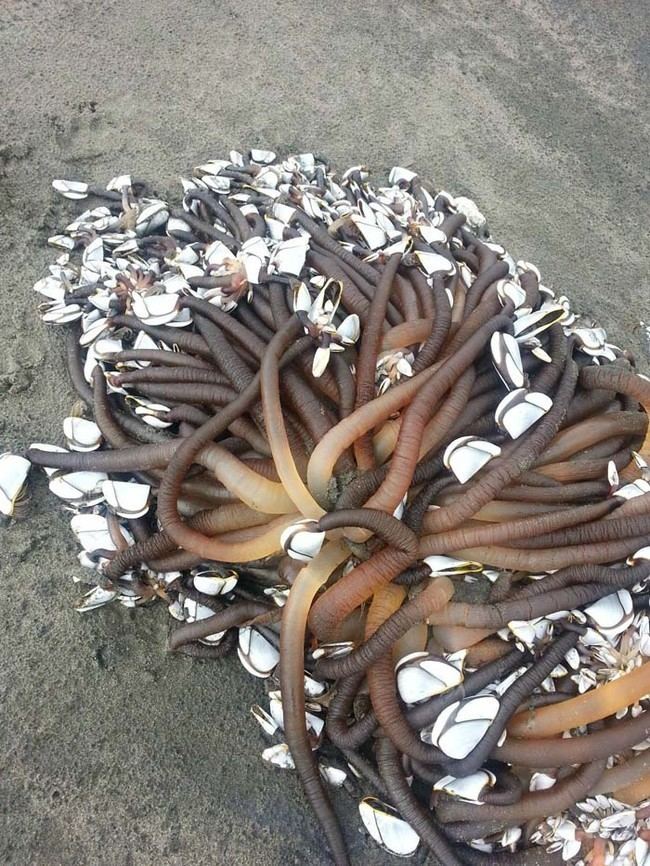 | ||
Goose barnacles feeding
Goose barnacles (order Pedunculata), also called stalked barnacles or gooseneck barnacles, are filter-feeding crustaceans that live attached to hard surfaces of rocks and flotsam in the ocean intertidal zone.
Contents
- Goose barnacles feeding
- Goose barnacles on beached boat ocean shores wa
- Biology
- Spontaneous generation
- Taxonomy
- As food
- References

Goose barnacles on beached boat ocean shores wa
Biology
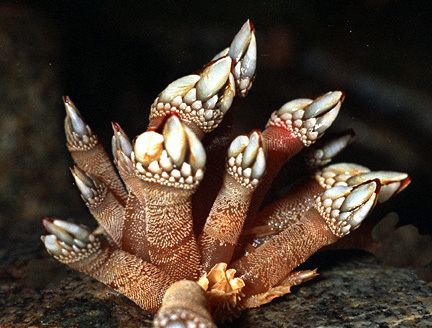
Some species of goose barnacles such as Lepas anatifera are pelagic and are most frequently found on tidewrack on oceanic coasts. Unlike most other types of barnacles, intertidal goose barnacles (e.g. Pollicipes pollicipes and Pollicipes polymerus) depend on water motion rather than the movement of their cirri for feeding, and are therefore found only on exposed or moderately exposed coasts.
Spontaneous generation
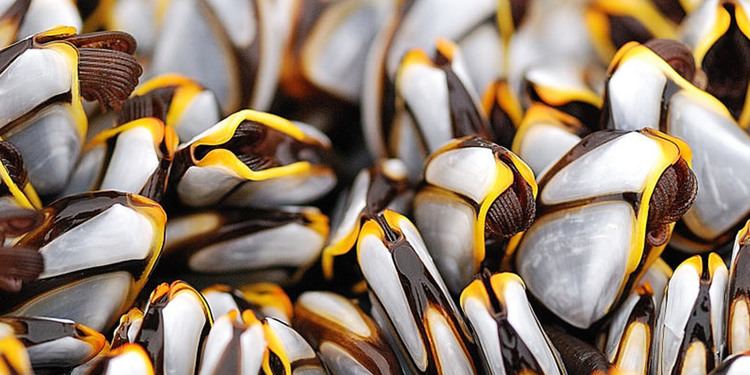
In the days before it was realised that birds migrate, it was thought that barnacle geese, Branta leucopsis, developed from this crustacean, since they were never seen to nest in temperate Europe, hence the English names "goose barnacle", "barnacle goose" and the scientific name Lepas anserifera (Latin anser = "goose"). The confusion was prompted by the similarities in colour and shape. Because they were often found on driftwood, it was assumed that the barnacles were attached to branches before they fell in the water. The Welsh archdeacon of Brecon, Giraldus Cambrensis, made this claim in his Topographia Hiberniae.
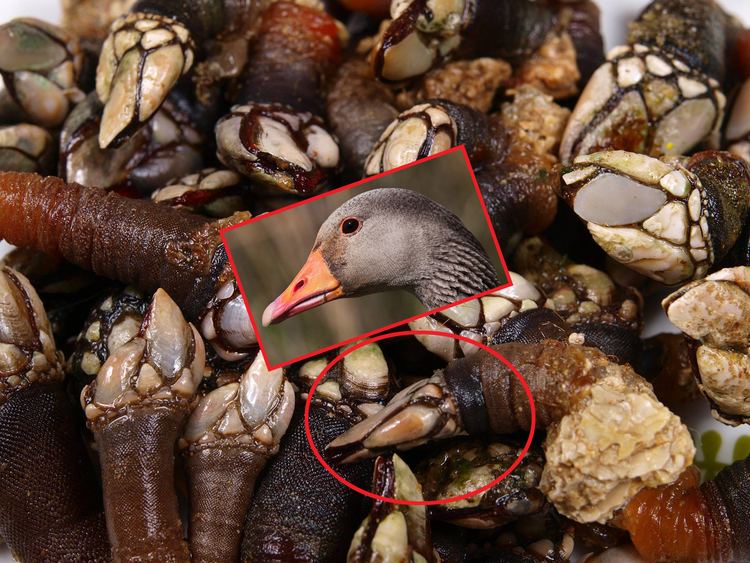
Since barnacle geese were thought to be "neither flesh, nor born of flesh", they were allowed to be eaten on days when eating meat was forbidden by Christianity, though it was not universally accepted. The Holy Roman Emperor Frederick II examined barnacles and noted no evidence of any bird-like embryo in them, and the secretary of Leo of Rozmital wrote a very skeptical account of his reaction to being served the goose at a fast-day dinner in 1456.
Taxonomy
The order Pedunculata is divided into the following suborders and families:
As food
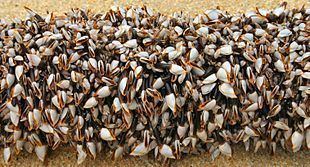
In Portugal and Spain, they are a widely consumed and expensive delicacy known as percebes. Percebes are harvested commercially in the Iberian northern coast, mainly in Galicia and Asturias, but also in the Southwestern Portuguese coast (Alentejo) and are also imported from overseas, particularly from Morocco and Canada.
In Spain, Percebes are lightly boiled in brine and served whole and hot under a napkin. To eat percebes, the diamond shaped foot is pinched between thumb and finger and the inner tube pulled out of the scaly case. The claw is removed and the remaining flesh is swallowed. The indigenous peoples of California eat the stem after cooking it in hot ashes.
